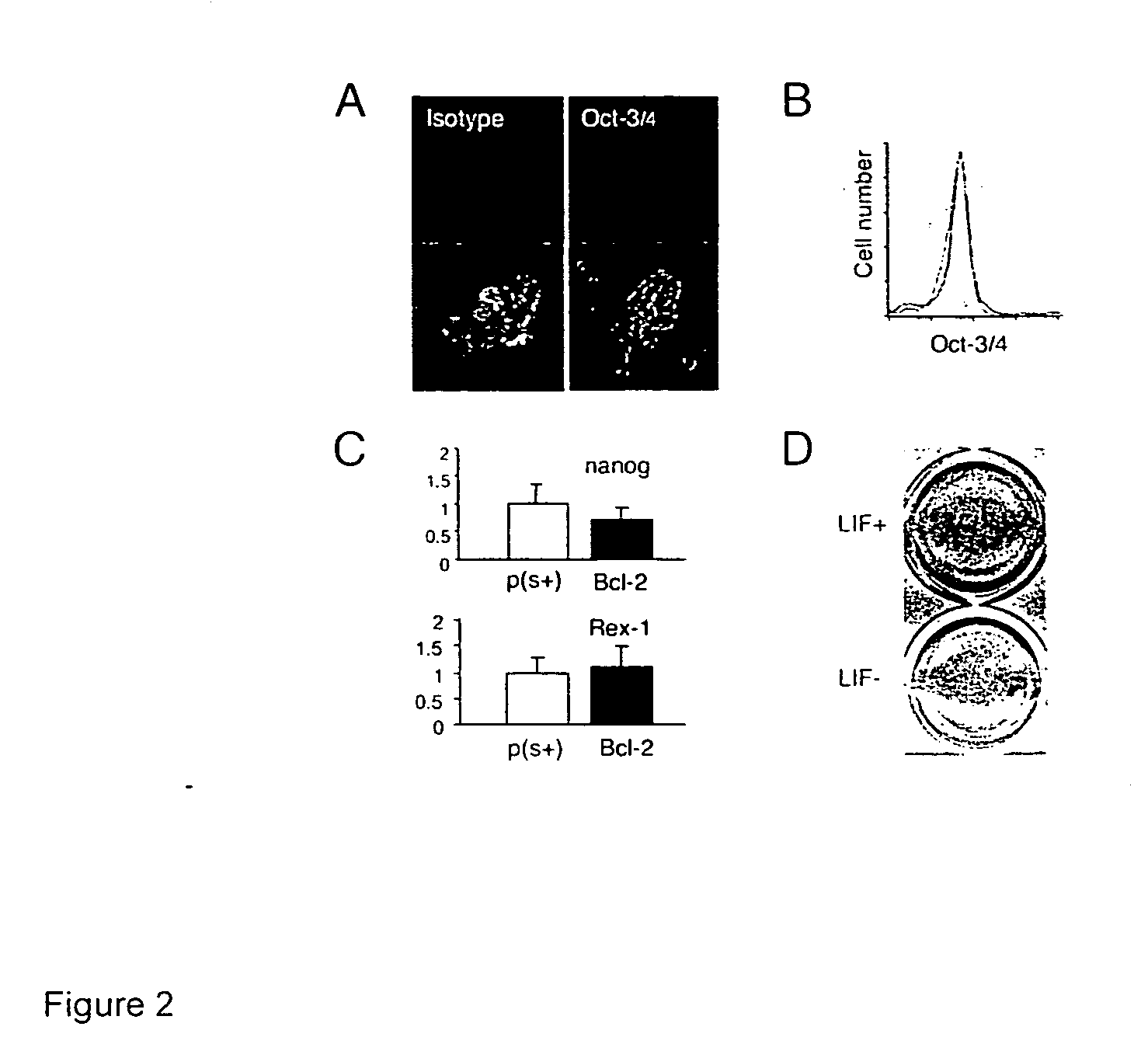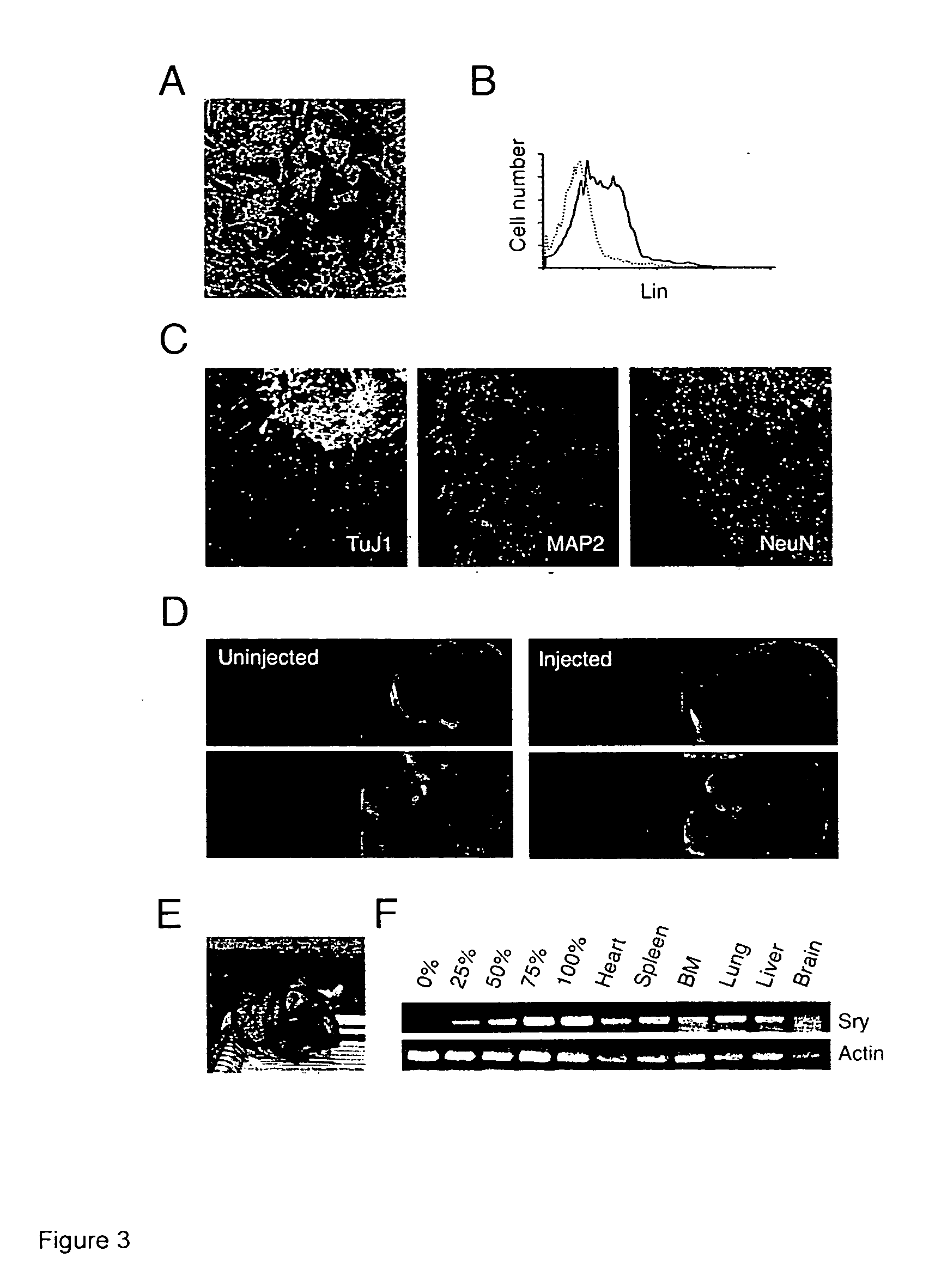Feeder layer and serum independent embryonic stem cells
a serum-based, embryonic stem cell technology, applied in the direction of genetic material ingredients, biocide, genetically modified cells, etc., can solve the problems of es cells becoming apoptotic, cytokines, growth factors, chemicals on self-renewal and differentiation of es cells, and the presence of these components complicates the analysis of cytokines, growth factors, etc., to reduce the activity of pro-apoptotic proteins, increase the activity of anti-
- Summary
- Abstract
- Description
- Claims
- Application Information
AI Technical Summary
Benefits of technology
Problems solved by technology
Method used
Image
Examples
Embodiment Construction
[0013] ES cells sustain the characteristics of undifferentiated, pluripotent stem cells during long-term serum- and feeder layer cell-free conditions, including the ability to be expanded in vitro, but maintain their potential to differentiate into mature cell types. Defined media for the culture of the ES cells may include insulin, transferrin, and albumin as basic supplements for serum-free cultures, but preferably no other proteins or hormones. The cells can expand in such media in the presence of LIF, and do not require the presence of bone morphogenic proteins (BMPs), growth and differentiation factors (GDFs), or an extracellular protein matrix derived from feeder layer cells.
[0014] The ES cells are manipulated to permit their long term growth in such defined media by shifting the apoptotic balance of the cells, through increasing the activity of anti-apoptotic proteins, e.g. Bcl-2; Bcl-X, Mcl-1, etc.; or decreasing the activity of pro-apoptotic proteins, e.g., Bax, Bad, etc. ...
PUM
| Property | Measurement | Unit |
|---|---|---|
| volume | aaaaa | aaaaa |
| cellular composition | aaaaa | aaaaa |
| morphology | aaaaa | aaaaa |
Abstract
Description
Claims
Application Information
 Login to View More
Login to View More - R&D
- Intellectual Property
- Life Sciences
- Materials
- Tech Scout
- Unparalleled Data Quality
- Higher Quality Content
- 60% Fewer Hallucinations
Browse by: Latest US Patents, China's latest patents, Technical Efficacy Thesaurus, Application Domain, Technology Topic, Popular Technical Reports.
© 2025 PatSnap. All rights reserved.Legal|Privacy policy|Modern Slavery Act Transparency Statement|Sitemap|About US| Contact US: help@patsnap.com



